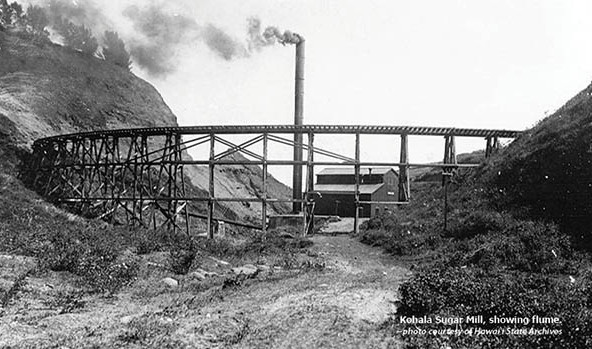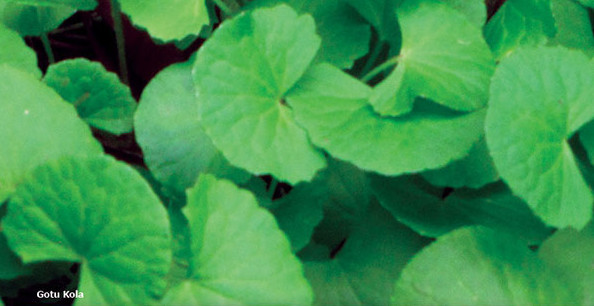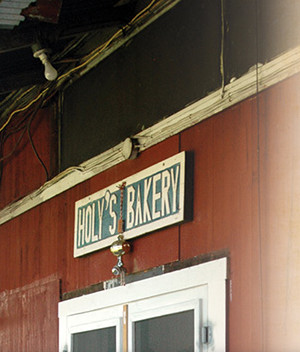
Then & Now: The Kohala Ditch
 By Robert Oaks
By Robert Oaks
For over a century, like the other Hawaiian Islands, Hawai‘i Island depended heavily on sugar cane as a major component of its economy. The story of how sugar barons controlled the Kingdom, Territory, and State of Hawai‘i in the late nineteenth century and well into the twentieth need not be recounted here. Global competition ultimately brought an end to Hawaiian sugar, and today it continues in a much reduced form only on Maui. Even so, if we look closely, we can still see the influence of sugar, especially in North Kohala.
Sugar production needed water, an enormous amount of water. To produce a pound of sugar required up to 500 gallons of water. One million gallons was required every day for even a relatively small 100-acre plantation.
The problem, of course, is that even though Hawai‘i Island usually has an abundant supply of water, it is not always in the right place. In areas such as Hilo and Hāmākua, rainfall is plentiful, though not always consistent.
In other areas such as Kohala, however, the rain falls in the wrong places, or doesn’t fall much at all. Droughts meant disaster, not only due to lack of water, but also because of the increased danger of canefield fires.
Irrigation was the ultimate solution. Even in areas of East Hawai‘i where water was usually plentiful, production generally increased with regular irrigation. However, irrigation required the transportation and diversion of water, a major engineering and technological feat in the late nineteenth and early twentieth centuries. The Hawaiian sugar industry depended on moving large quantities of water over long distances through tunnels, flumes, and ditches, many of which remain in use more than a century later.
By 1920, the sugar industry on all the islands diverted 800 million gallons of water each day and pumped an additional 400 million gallons from wells, which were especially significant on O‘ahu. Because these water projects did not receive support from the government, only the significant financial resources of the “Big Five” sugar planters, and men like California industrialist Claus Spreckels made them possible. Although small irrigation ditches existed in the 1850s, it was not until the 1870s that the large-scale construction of ditches began with Sam Alexander and Henry Baldwin’s Hāmākua Ditch on Maui (not to be confused with the later Hāmākua Ditch on Hawai‘i Island). Sprekels built a second ditch, completed in East Maui in 1879.
Hawai‘i Island’s ditch projects started later than the ones on other islands and benefited from the lessons learned. The need was greatest in Kohala where by 1900 five small plantations had each tried individually for several years to get more water. Their attempts resulted in small, unreliable, and easily contaminated supplies. It was clear that these independent efforts, lacking the financial resources of Alexander and Baldwin or Spreckles, were doomed. The Bishop Museum and Bishop Estate, which owned much of the watershed in the area, undertook to build an irrigation ditch that would sell water to the plantations.
After a feasibility study suggested that the idea was both practical and profitable, two ditch companies were formed. The Kohala Ditch Company, established in 1904, was the first. The Hāmākua Ditch Company (again, not to be confused with the Hāmākua Ditch on Maui) followed in 1906.
The five Kohala plantations—Union Mill, Kohala Sugar, Niuli‘i Plantation, Hālawa Plantation, and Hawi Sugar—committed to buying water, and the Kohala Ditch Company sold stock and bonds to finance the venture.
The chief engineer for the project was Michael O’Shaughnessy, an Irish-born civil engineer, who was then completing a ditch on Maui. O’Shaughnessy would go on to fame (or infamy) as the developer of the Hetch Hetchy water system that still delivers water to San Francisco and surrounding communities from the Sierra Nevada Mountains.
The March 1905 Kohala contract with O’Shaughnessy stipulated that the ditch had to be finished in 15 months.
It was an ambitious project over very rough territory. The difficult terrain ruled out the use of large equipment, meaning that most of the work would be done by manual laborers. Building wagon access trails on the edge of the Kohala cliffs was more terrifying than building the ditch itself. In some places, wagon trails were impossible, so work crews cut five-foot wide paths for pack animals.
Among the workers were 600 Japanese contract laborers, paid an average wage of one dollar per day. They could earn more by shaping rocks into square blocks, used to line the walls of some of the tunnels. For this work, still visible in the tunnels, they received five cents per block. Hand drilling by Japanese workers was cheaper than using air or electric drills to bore through the lava. It was obviously rough work. According to O’Shaughnessy, the Japanese “seemed to like this class of work and made a success of breaking rock where other nationalities were a failure.”
During construction, seventeen workers died from various causes. Many mules also died when they fell off the steep cliffs, many of them over 1,000 feet high. Even the sturdiest of workers, according to one report, were so exhausted after a few weeks of work in the dark and cold environment that they required hospitalization. To add to the difficulty, it rained nearly every day from April through July in 1905.
Despite the difficulties, the first section of the ditch was completed in June 1906; the second portion a year later. The entire Kohala Ditch was 26 miles long, though the name “ditch” is somewhat misleading and possibly makes the enterprise seem simpler than it was in reality. When it went through the mountains, it consisted mainly of tunnels. There were 57 tunnels in all, the longest of which was 2,500 feet, nearly half a mile. The entire effort included 16 miles of tunnels and only six miles of open ditch. The remainder consisted of flumes, built over steep ravines and canyons. The ditch itself was lined either with cement or stones as far as Hawi; the tunnels had cement linings; and the flumes, which were seven feet wide and six feet deep, were caulked and tarred.
Built at a relatively low cost of $694,000, the ditch returned a profit for many years, both from the sale of water and from rent obtained for land the company owned in Kohala and Hawi. In addition to making money for its investors, the irrigation resulted in nearly doubling the yield of Kohala canefields.
When the Kohala Ditch was complete, the investors turned their attention to the Hāmākua coast. As in Kohala, Hāmākua plantations tended to be small and independent. This situation was different from just about everywhere else in the islands, where plantations were larger, with one or two dominating a given region. Large plantations could afford to build their own ditches; small plantations could not, and thus they depended on profit-seeking corporations to supply needed water.
The Hāmākua Ditch Company, formed in 1904, and soon renamed the Hawaiian Irrigation Company, built two ditches. O’Shaughnessy started the project as chief engineer, and he soon left after a dispute with one of the financial backers.
The Upper Hāmākua Ditch, rushed to completion by January 1907, was not a financial success. Because of its hasty construction with unlined ditches, it was prone to leak. The access trails and flumes deteriorated.
Maintenance was constant and expensive. By 1915, its original flow was reduced by one-half, as much as 85 percent of the water was lost before it reached its destination. Expensive repairs that year, which virtually reconstructed the ditch in many areas, helped somewhat, yet by the end of the 1920s maintenance and additional work stopped.
The Lower Hāmākua Ditch, on the other hand, did turn out to be a good investment. Opening in the summer of 1910, the ditch was 25 miles long and included 45 tunnels. Like the Kohala ditch, the construction crew consisted mostly of Japanese, plus some Hawaiians, Koreans, and Chinese. They earned one dollar a day on this project to bring water to Hāmākua coast plantations.
In addition to irrigation, the sugar industry in both Kohala and Hāmākua needed water to transport harvested cane from the upland fields to the mills, which were usually located on the coast. The difficult terrain of Hawai‘i Island made this goal especially difficult. The solution was an elaborate network of flumes—ditches and wooden chutes that traversed gorges—literally washing the cane down the mountains to the mills. At the mills, more water was required both to process the cane into raw sugar and to generate electricity.
For ninety years the sugar mills of Kohala relied especially on the Kohala Ditch. Even after the sugar industry came to a close in the 1970s, the ditch continued to provide water to other farmers and one of Hawai‘i’s two dairies. The Kohala ditch still moves eight to ten million gallons of water each day to North Kohala. Additionally, by the late 1990s, 22,000 tourists were drawn each year to the adventure of “Flumin’ Da Ditch” in kayaks, gracefully floating through back country rainforests and tunnels.
Just how essential the ditches were to the area became suddenly apparent on October 15, 2006, when a pair of earthquakes (6.7 and 6.0 on the Richter scale) and resulting landslides severely damaged the ditch systems, shutting off the flow of water to North Kohala. Access trails were also destroyed, making repairs difficult. Well water provided only partial relief, and residents realized that restoring the ditch was vital to their economic livelihood for both agriculture and tourism.
Because the ditch’s owner, the Kohala Ditch Company, could not afford the projected multi-million dollar repair cost, the prospect of leaving the ditch unrepaired brought community leaders together. With grants from FEMA, other Federal agencies, and the state, a massive repair effort was soon underway. It took two years and nearly $6,000,000, and eventually the water began to flow again in some portions of the ditch. In another year, the water returned to North Kohala. The project involved rebuilding the main water inlet, replacing several large elevated flumes deep in the Kohala valleys, as well as repairing tunnels and ditch segments; in some places, pipes were installed to replace the open ditch.
Concurrent with the post-earthquake rebuilding of the Kohala Ditch, community leaders took it upon themselves to form the Kohala Ditch Foundation, a non-profit group dedicated to the preservation and sustainable operation of this engineering marvel.
Today the water supplies sod farms, a dairy, cattle ranches, vegetable farmers, and floral growers. And again the tourists have returned for a leisurely float. Bill Wong, a fourth generation native of Kohala and his wife Sandie rekindled the concept of the former “Flumin’ Da Ditch” organization. Their company, ATV Outfitters and Kohala Ditch Adventures, began offering tours again in 2010. They now employ 30 people, making them one of the largest employers in the area. Many of the employees are also from long-time Kohala families who have lived in the area for several generations.
Those who take these tours will find knowledgeable guides who will relate the region’s history and culture, while taking visitors to lush and beautiful areas of the island that otherwise would be largely inaccessible. They will also gain an appreciation for both the engineering complexity and the back-breaking work that went into completing the ditches, tunnels. and flumes over a century ago. It is hoped that the Kohala Ditch will remain in service to the community, Island, and State for at least another 100 years ❖
Special thanks to Mike Luce for assistance in developing this article.
For further reading:
Oaks, Robert F. Hawai‘i, A History of the Big Island. Charleston, SC: Arcadia Publishing, 2003.
Schweitzer, Sophia V. Big Island Journey. Honolulu: Mutual Publishing, 2009.
Schweitzer, Sophia V. and Michael Gomes. Kohala ‘Aina. Honolulu: Mutual Publishing, 2003.
Wilcox, Carol. Sugar Water, Hawai‘i’s Plantation Ditches. Honolulu: University of Hawai‘i Press, 1997.
Contact Kohala Ditch Adventures: KohalaDitchAdventures.com
Contact writer Robert Oaks: boboaks@pacbell.net


